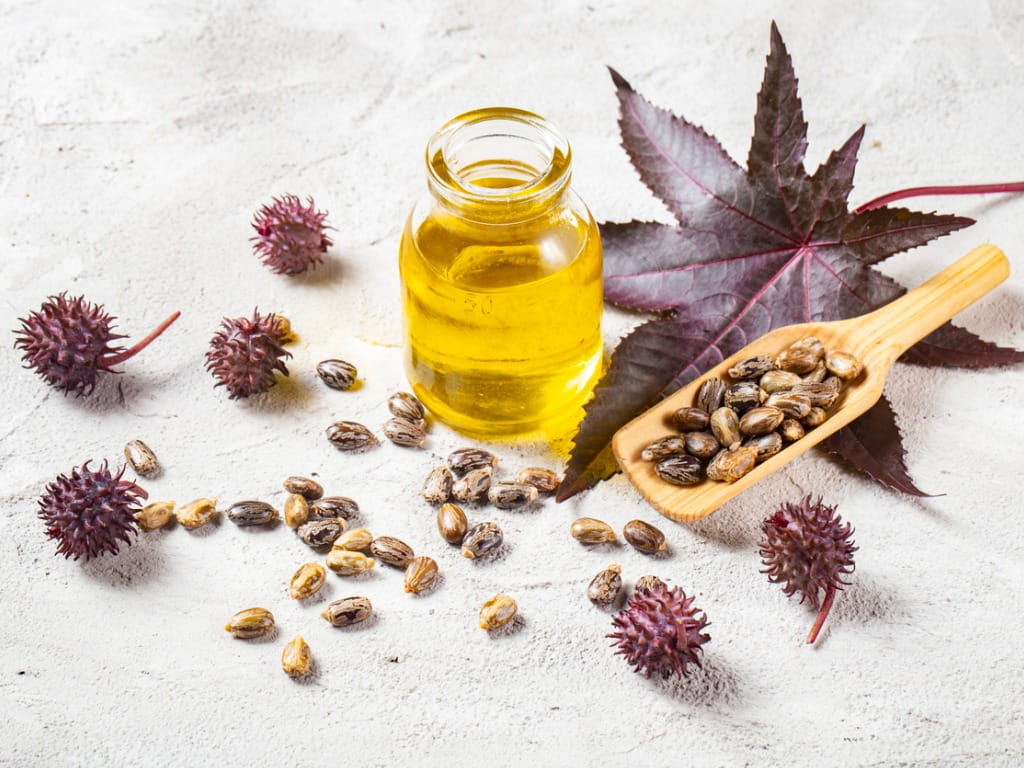What Happens If I Eat Castor Beans?

The Bottom Line
The castor bean is the seed of the castor oil plant (Ricinus communis). It contains a highly toxic compound called ricin, which is released when the seed is crushed or chewed. Ricin prevents cells from making proteins, which are essential to life. Although castor oil is made from the same seeds, it does not contain ricin.

What is a castor bean?
The castor bean is the seed of the castor oil plant (Ricinus communis). Although native to East Africa, the plant is found in tropical and subtropical areas around the world, including the United States. It grows quickly into a shrub and can be invasive or weed-like. The seeds are sometimes used to make jewelry.
The castor bean/seed contains a highly toxic compound called ricin. Although castor oil is made from the same seeds, it does not contain ricin. To make castor oil, the seeds are cooked, dried, and pressed. The oil is then further refined. The cooking and refining processes remove the ricin.
What is ricin?
Ricin comes from the Latin word ricinus, which means “tick” and signifies the seed’s resemblance to a type of tick found in Europe. Ricin is one of the most toxic substances known to man. It has the ability to act on the cellular level—the smallest building blocks of an organism. Once inside cells, ricin disrupts the ability of the cells to make proteins. Proteins are required for the structure and actions of all cells. Without the ability to make proteins, our cells cannot function, and this can lead to death. It takes very little ricin to cause severe poisoning and potential death.
The concentration of ricin in castor beans varies depending on many factors such as the geographic location from which they were harvested and the size/weight of the bean. Toxicity is further affected by other factors including whether the castor bean was chewed or crushed prior to swallowing as well as someone’s general health characteristics and susceptibility. It’s been theorized that one chewed or crushed seed could be enough to cause serious harm in a child.
What are the symptoms of castor bean poisoning?
Poisoning from castor beans is rare. They have a hard coat, which prevents the release of ricin. Toxicity results when the seeds are crushed or chewed prior to swallowing.
Nausea, vomiting, diarrhea, and abdominal pain are expected after ingestion of crushed/chewed castor beans. The cells that line the digestive tract can begin to shed, resulting in gastrointestinal bleeding. Fluid and electrolyte loss can lead to shock and death. Multiple organs like the liver, brain, and kidneys can also be affected at the cellular level, potentially shutting down. Death from castor beans is rare these days, due to advanced medical care and life support. However, this might not apply in unique situations involving use of ricin as a bioterrorism agent, such as in the assassination of Bulgarian writer, Georgi Markov. Markov was shot in the leg with a ricin-containing pellet which killed him just a few days later.
If you or someone else has swallowed a castor bean or if you’re concerned about an exposure to castor beans, contact Poison Control. Get an immediate personalized recommendation online or call 1-800-222-1222. Both options are free, confidential, and available 24 hours a day.
Serkalem Mekonnen, RN, BSN, MPH
Certified Specialist in Poison Information
Poisoned?
Call 1-800-222-1222 or
Prevention Tips
- Do not swallow castor beans.
- Do not crush or chew castor beans.
- Carefully supervise children and pets when they’re outdoors to prevent exposure to plants, berries, and seeds.
- Whether you have castor beans for planting or making jewelry, do not store them within sight or reach of children or pets.
- Never attempt to use castor beans as a health remedy.
This Really Happened
A 51-year-old man swallowed one castor bean thinking that it would help his cough. He vomited and about 3 hours later became confused. In an emergency room, he had dilated and sluggish pupils and dry mouth. He was given activated charcoal to adsorb the toxin in his stomach. An EKG (which checks the electrical signal and rhythm of the heart) showed a slowed heart rate and an abnormal wave. A CT scan of his head was done, and it was normal. His heart rate gradually normalized, and he returned to normal consciousness. He was discharged after 2 days in the hospital (Al-Tamimi et al. 2008).For More Information
For Pet Parents
Castor bean plant. New York: ASPCA Animal Poison Control [cited 24 May 2022].
Castor bean. Bloomington (MN): Pet Poison Helpline [Cited 23 May 2022].
References
Aplin PJ, Eliseo T. Ingestion of castor oil plant seeds. Med J Aust. 1997 Sep 1;167(5):260–1.
Poisoned?
Call 1-800-222-1222 or
Prevention Tips
- Do not swallow castor beans.
- Do not crush or chew castor beans.
- Carefully supervise children and pets when they’re outdoors to prevent exposure to plants, berries, and seeds.
- Whether you have castor beans for planting or making jewelry, do not store them within sight or reach of children or pets.
- Never attempt to use castor beans as a health remedy.
